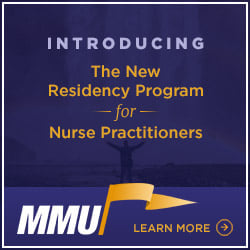7 Ways to Class Up Your Nurse Practitioner Resume
A resume is simply a summary of your education and employment experience, so it should be pretty easy to pull together, right? While it seems simple, I’ve seen a lot of unfortunate looking nurse practitioner resumes out there. Studies show that prospective employers spend just seconds scanning a resume before making a decision to move to the next step in the employment process. So, attention to detail is a must when you’re applying for nurse practitioner jobs. One small resume misstep could cost you a job interview.
If you’re on the hunt for a new nurse practitioner position, class up your resume to increase your chances of moving forward with a prospective employer using these tips and tricks.
1. Simplicity is Key
Your resume is not an art project. Some professions, such as those in graphic design or marketing, have a little freedom when it comes to adding a creative element to a resume. I’m sorry to report that in healthcare you do not.
Plain equals professional on a nurse practitioner resume. Keeps yours classy by omitting colors, photos, and other design elements. Use bold headings to make skimming your resume a cinch. You can also make things easier for a prospective employer by hyperlinking your email address so HR can contact you with a single click to offer an interview.
2. Format Counts
Getting margins to align and bullet points in the right place can be difficult when you are writing your resume. Don’t cut corners when it comes to formatting this all important document. If you aren’t sure how to use your word processing platform to accomplish this, get help.
In addition to a cleanly laid out resume, you should also save your resume as a pdf document before sending to a prospective employer. This ensures that formatting isn’t altered when the document is opened on a different computer protecting your hard work.
You’re an amazing person with a variety of hobbies and interests, I know. It seems like you’re cutting yourself short by presenting a resume that showcases only your nursing and nurse practitioner education and career. Avoid the temptation, however, to add personal details such as hobbies on your resume.
Placing personal information, hobbies, travel destinations, and the like on your resume gives it an unprofessional vibe. Keep your resume classy by sticking to what’s important and relevant to your profession and prospective employer.
4. Get Specific
Get specific on your resume when it comes to describing your work experience or preceptorships. Describing your responsibilities in these settings gives a more complete picture of your abilities, and is a sure way to impress employers. You may say something along the lines of “implemented an infection control program which decreased hospital acquired infections by 50 percent”, rather than “developed infection reduction program”. Use of resume action words (like these) will help.
5. Tailor to the Employer
Applying for nurse practitioner jobs is a lot of work. It’s even more work when you tailor your resume to each and every position to which you apply. Taking this step, however, is essential. As you submit job applications, review your resume again. If you meet the requirements listed for the position, are these items easily visible on your resume as well? Can you use any of the words from the job description in your resume to make the two match up? Ideally, your resume should clearly indicate why you are a match for the specific job in question. Just like interview suits, the classiest resumes are tailored specifically for the event at hand.
6. Keep it Short
Keep your resume to one page, mayyybe two if you’ve been a nurse practitioner for a number of years. Employers only spend a few seconds looking at resume before deciding to move forward, or move on. Brevity is to your benefit. The more quickly an employer can scan your resume and review your education, accomplishments, and experience, the more impressed they will be. Resist the urge to craft a lengthy resume. You can share additional details about your other credentials during the interview process.
7. Professional Persona
Even though your resume is all about you, avoid personal pronouns such as ‘I’ and ‘we’. Rather, use action verbs like ‘worked’, or ‘maintained’. This gives your resume the professional edge employers expect.
If you’re in the market for a new position, pay attention to detail when it comes to your resume. Your added effort might just be the big break you need in your job search.
You Might Also Like: 9 Tips to Make Your Nurse Practitioner LinkedIn Profile Pop


